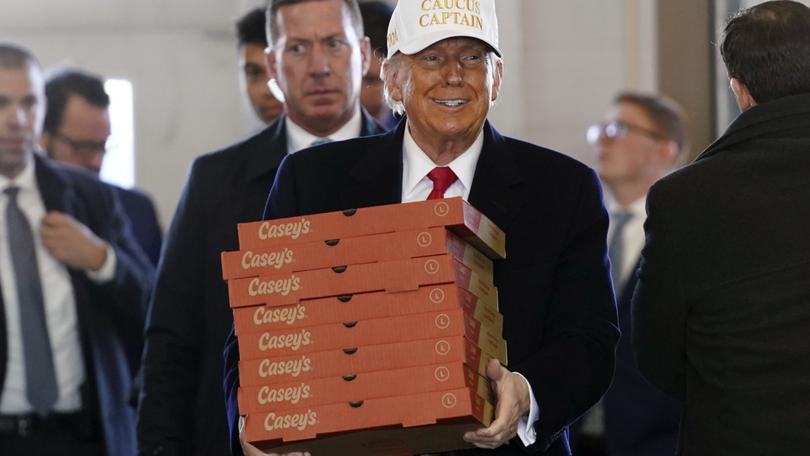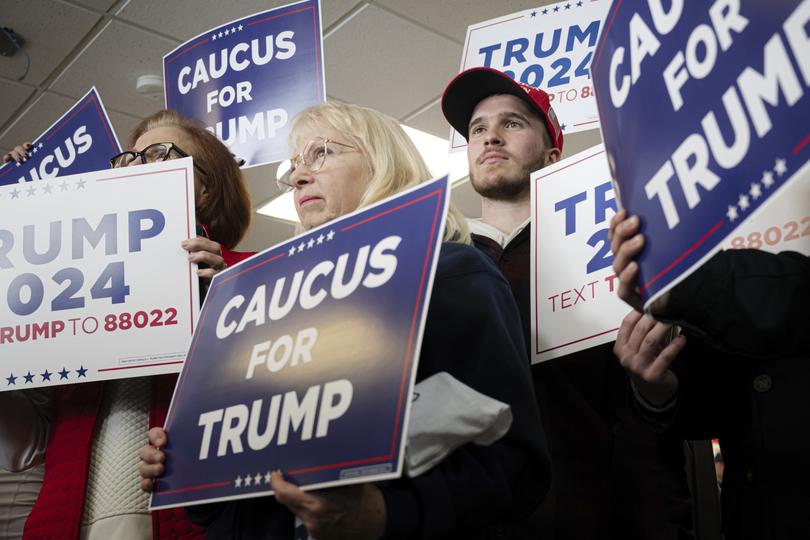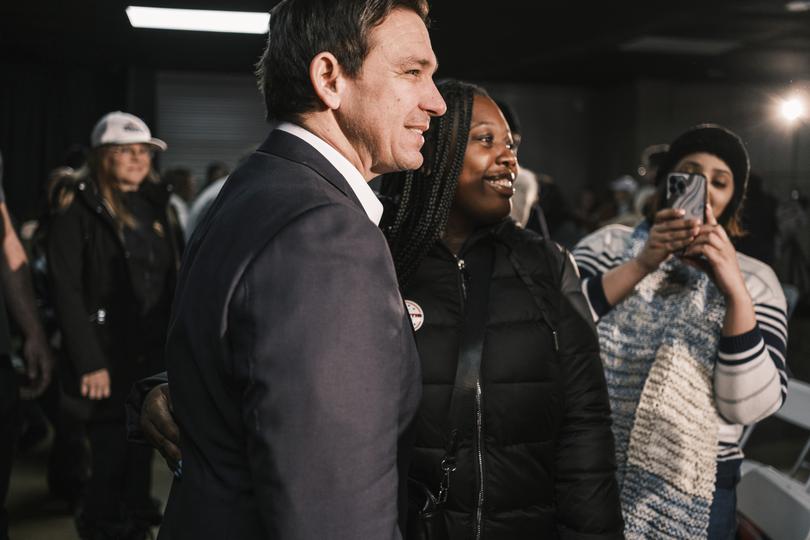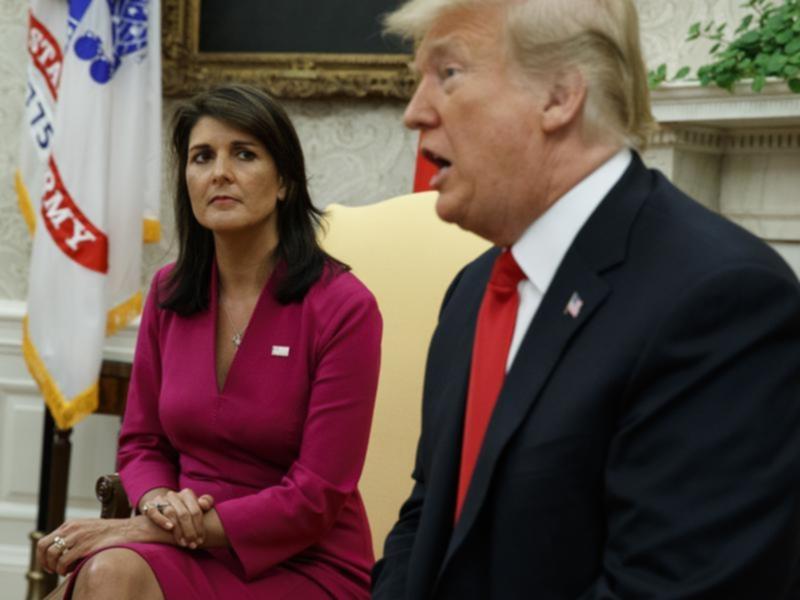The New York Times: Five takeaways from Trump’s runaway victory in the Iowa Caucuses

After nearly a year of campaigning, more than $123 million in advertising and an inglorious, frozen-over finish, the Iowa caucuses ended much as the race began: Donald Trump, the dominant front-runner, was declared the winner before most of the votes had even been cast.
Trump’s overwhelming victory again demonstrated his enduring command of the Republican Party. Far behind him, Florida Gov. Ron DeSantis narrowly pulled ahead of Nikki Haley, a former South Carolina governor. Their close finish gave both a rationale for continuing their campaigns, which is likely to help Trump.
Sign up to The Nightly's newsletters.
Get the first look at the digital newspaper, curated daily stories and breaking headlines delivered to your inbox.
By continuing you agree to our Terms and Privacy Policy.The contest now turns to New Hampshire, a more moderate state both in temperature and temperament, where polls show Haley with more support. After so many months of attacks between her and DeSantis, the old political trope held true: In 2024, there are three “tickets” out of Iowa. But Trump rides away on a bullet train.
Here are five takeaways.
Trump mopped up support everywhere.
As his rivals spent weeks campaigning across the state, Trump flew into Iowa only about a dozen times. Key Republican figures in the state, including Gov. Kim Reynolds and top evangelical leaders, endorsed his rivals. Yet by the time Trump took the stage for his victory speech, he appeared on track to win 98 of the state’s 99 counties, with him and Haley neck and neck in the final one.
Trump’s sweep of the caucuses was broad and deep. He outperformed DeSantis in conservative strongholds, including northwest Iowa, which is home to many evangelical voters who were heavily courted by the Florida governor. And even in more moderate suburban counties surrounding Des Moines, which were considered favorable terrain for Haley, Trump won, albeit with far tighter margins.
Technology entrepreneur Vivek Ramaswamy, who cast himself as a younger heir to Trump’s MAGA movement, captured less than 8% of votes. He quickly suspended his campaign and endorsed Trump on Monday evening.
Much of the battle in Iowa had been over expectations: Would Trump win more than 50% of the vote? Even as he bragged about his huge advantage in polls, his aides tried to lower the bar to a winning margin of 12 percentage points, the biggest recorded in a competitive Republican presidential race in the state. With the former president finishing at 51% to DeSantis’ 21% and Haley’s 19%, he exceeded both markers.

DeSantis won a Pyrrhic fight for second.
Though he edged out Haley for second, it’s hard to see a clear path forward for DeSantis — and it’s unclear how long he will have enough money to forge ahead.
DeSantis had staked his campaign on Iowa and promised more than once that he would win the caucuses.
DeSantis checked every box that would usually be required to carry Iowa. He visited all 99 counties, stopped by tiny towns and pubs, and took questions from locals and the press. He won over Reynolds and put to use the vast network of evangelical leader Bob Vander Plaats. His super political action committee spent tens of millions of dollars on a door-knocking program of unrivaled scale.
He tried to run to Trump’s right — portraying him as insufficiently conservative — and the strategy failed. There simply weren’t enough Republicans who wanted to move on from Trump.
Now, he heads to nominating states that are far less hospitable and where he enjoys none of the ideological advantages he had in Iowa. He faces more moderate voters in New Hampshire — where he is polling in third or even fourth place — and is expected to lose badly to Trump in Nevada, which holds its caucuses next.
If DeSantis remains in the race beyond that point, he would move on to South Carolina, where Trump is beloved and where Haley is a former governor.

Haley’s rising hopes were dampened.
Measured against the expectations of last summer, Haley had a heartening night, even if only her most wishful supporters could squint hard enough to see a path to ultimate victory. For most of last year, Haley polled in the single digits in Iowa. She had little money and no field organization. DeSantis enjoyed overwhelming head starts in cash, staff and local support.
Haley finished closely behind DeSantis by consolidating the party’s marginalized anti-Trump bloc and cobbling together a coalition of college-educated Republicans, independents and even some Democrats living in urban and suburban areas. And she slaughtered DeSantis on television, with allies spending more than $20 million on attack ads against him.
Haley had a rough last two weeks as media scrutiny intensified on her. Missteps, like her unforced errors when asked about the Civil War, may have blunted her momentum in the final week before the caucuses. A nearly perfect performance from here on — and more than a few lucky breaks — will be required for her to give Trump anything resembling a competitive race.
Haley sees more fertile ground in New Hampshire, where she must demonstrate she can defeat Trump — or at least come close enough to justify keeping her campaign alive until her home-state primary in South Carolina on Feb. 24.

Turnout was low for freezing, low-drama caucuses.
Turnout fell far short of the last contested Republican caucuses, in 2016, when nearly 187,000 Iowans helped choose their party nominee.
This year, only about 110,000 people participated. The low turnout could be another mark against a quirky process that has come under intense criticism in recent years.
The projections for turnout had ranged wildly, with snow and bitterly cold temperatures creating unpredictability that left the campaigns struggling to figure out what the evening would look like.
Trump’s status as a de facto incumbent, combined with the cancellation of campaign appearances in the past few days, meant the caucuses lacked the suspense of the Democratic nominating contest four years ago.
Those 2020 caucuses were marred by problems reporting data. That mess, as well as concerns that a predominantly white state didn’t reflect the diversity of the Democratic Party, prompted President Joe Biden to push Iowa back on the party’s presidential nominating calendar.
Four years later, Trump showed that the caucuses could be won without much institutional support from Iowa Republicans — or even without spending much time in the state — and raised new questions about the future of the Iowa contest.

Iowa doesn’t mean much for the fall.
Despite the history that Trump made, the results in solidly red Iowa don’t offer meaningful clues for the 2024 general election.
There is little doubt that Trump has caused a major political realignment within the Republican Party, and Monday night he showed the commitment of his supporters, with many risking dangerous weather conditions to venture out for the chance to back him. There’s also little doubt that his political operation is far more sophisticated than it was in 2016.
The caucuses — with their 7 p.m. meeting time and extended process — bear little resemblance to voting in most of the country. They also attract only a fraction of the participation: Roughly 15% of the nearly 720,000 registered Republicans in Iowa took part this year.

Even in more robust years, the caucuses have a dismal record of picking the Republican nominee. In the seven contested Republican races since 1980, only two winners in Iowa have captured the party’s nomination: Sen. Bob Dole of Kansas in 1996 and Gov. George W. Bush of Texas in 2000.
A vast majority of Republican voters are likely to return to Trump in a general election. But what his hold on them in Iowa means for a brutal campaign fought over tens of thousands of swing voters, who are far less conservative, is harder to glean.
This article originally appeared in The New York Times.
© 2023 The New York Times Company
Originally published on The New York Times
